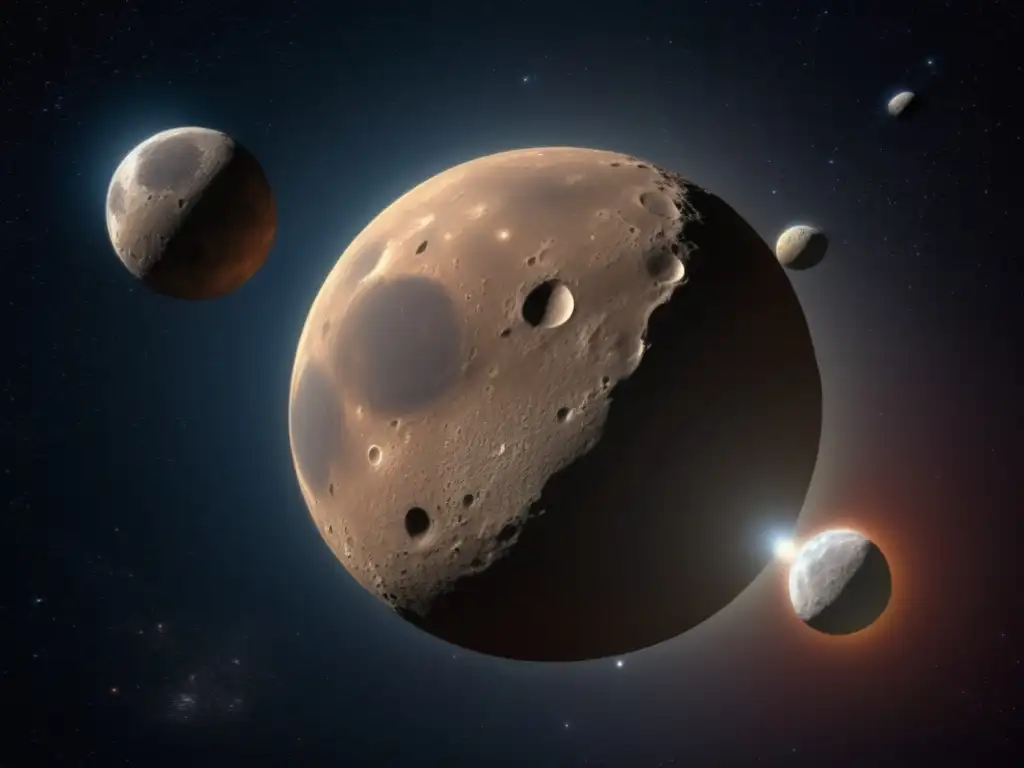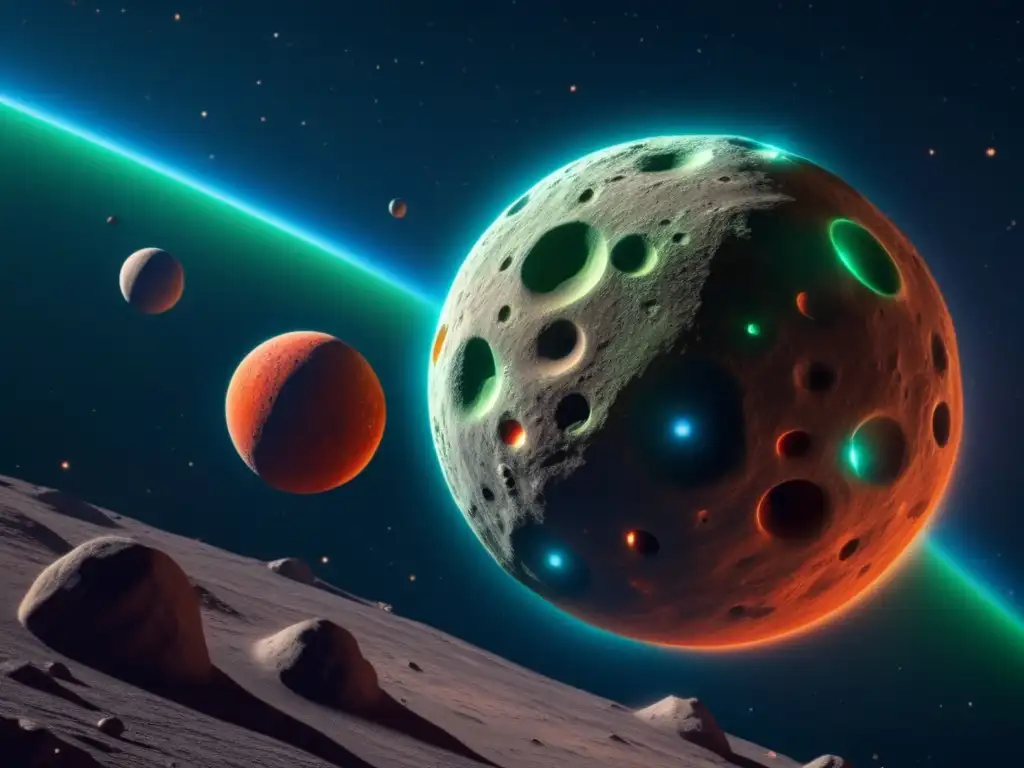Discovering The Unusual Binary Asteroid Patroclus-Menoetius

Introduction
Asteroids have long fascinated scientists and astronomers with their unique properties and mysteries. In recent years, the discovery and exploration of binary asteroids have provided valuable insights into the formation and evolution of these celestial objects. One such intriguing binary asteroid is Patroclus-Menoetius. In this article, we will delve into the details of this unusual binary asteroid, examining its characteristics, significance, and what it reveals about the fascinating world of asteroids.
The Discovery of Patroclus-Menoetius

Astounding Characteristics
Patroclus-Menoetius, also known as (617) Patroclus, is a binary asteroid located in the outer region of our solar system, specifically within the Jupiter Trojan population. It was discovered on October 17, 1906, by astronomer August Kopff at the Heidelberg Observatory in Germany. This binary system consists of two nearly equal-sized components, Patroclus and Menoetius, orbiting each other in a tight gravitational embrace. Such a configuration is relatively rare among asteroids and adds to the intrigue surrounding this particular celestial duo.
Mysterious Origin
The origin of binary asteroids like Patroclus-Menoetius remains a subject of ongoing scientific investigation. One prevailing theory suggests that they may have formed as a result of collisions between larger parent bodies, which subsequently fractured and remained gravitationally bound. Another possibility is that the binary system formed through a process known as "YORP spin-up," in which sunlight causes the rotation rate of an asteroid to increase until it becomes unstable and splits into two components. Further research and analysis are required to determine the exact formation mechanism of Patroclus-Menoetius.
Unveiling the Composition
Understanding the composition of asteroids is crucial in unraveling their story and shed light on the early solar system. Spectral analysis of Patroclus-Menoetius has revealed that both components belong to the C-type classification, indicating a carbonaceous composition. This composition suggests that the asteroid may contain significant amounts of organic compounds, water, and other volatile elements. The presence of such materials intrigues scientists as they potentially provide clues about the delivery of essential building blocks for life on Earth.
The Significance of Patroclus-Menoetius

Insight into Solar System Evolution
The study of binary asteroids like Patroclus-Menoetius provides valuable insights into the formation and evolution of our solar system. By analyzing the orbital dynamics and composition of these systems, scientists can gain a better understanding of the processes that shaped our celestial neighborhood billions of years ago. Patroclus-Menoetius offers a unique opportunity to study the interactions and transformations that occurred during the early stages of planet formation.
Possible Origins in the Kuiper Belt
Another intriguing aspect of Patroclus-Menoetius is its potential connection to the Kuiper Belt, a region beyond Neptune populated by icy bodies. Some researchers suggest that the binary asteroid may have originated in the Kuiper Belt before being captured by the gravitational influence of Jupiter and transitioning into its current orbit within the Trojan group. Further investigations and modeling studies are necessary to confirm this hypothesis and shed light on the complex dynamics of the outer solar system.
Implications for Planetary Defense
Studying binary asteroids like Patroclus-Menoetius can also have practical implications for planetary defense. Understanding their orbital dynamics and structural integrity is crucial in devising strategies to mitigate the potential threat posed by near-Earth asteroids. By analyzing the behavior of binary systems, scientists can refine impact predictions and develop more effective methods to deflect or redirect potentially hazardous asteroids.
Frequently Asked Questions

-
What is a binary asteroid?
A binary asteroid is a system consisting of two asteroids orbiting each other.
-
How do binary asteroids form?
Binary asteroids may form from collisions between larger parent bodies or through the YORP spin-up process.
-
What is the composition of Patroclus-Menoetius?
Patroclus-Menoetius belongs to the C-type classification, indicating a carbonaceous composition.
-
What can the study of binary asteroids reveal about the solar system?
Binary asteroids provide insights into solar system formation, early planet dynamics, and potential origins in distant regions like the Kuiper Belt.
-
Why is studying Patroclus-Menoetius relevant to planetary defense?
Analyzing the behavior of binary systems contributes to our understanding of asteroid impact risks and aids in developing mitigation strategies.
Conclusion
The discovery and study of binary asteroids like Patroclus-Menoetius contribute significantly to our understanding of the solar system's evolution, the dynamics between celestial bodies, and the potential origins of asteroids in the outer regions. By examining the characteristics, composition, and significance of Patroclus-Menoetius, scientists inch closer to answering fundamental questions about the formation of our celestial neighborhood. Continued research and exploration of these intriguing binary systems will undoubtedly unveil more captivating revelations in the future.
We invite you to share your thoughts and insights in the comments section below and engage with www.asteroidrealm.com. Your participation, whether through subscriptions or sharing this article on social networks, helps foster the exchange of knowledge and appreciation for the wonders of our universe. Thank you for joining us on this cosmic journey.
Additional Resources

For further reading on asteroids and related topics, please refer to the following resources:
- NASA - Near-Earth Object Program
- International Astronomical Union - Asteroids and Meteorites
- NASA Solar System Exploration - Asteroids, Comets, and Meteors
- JPL Education - Asteroids, Comets, and Meteors
 What Makes Asteroid Themis Unique?
What Makes Asteroid Themis Unique? Asteroid Icarus: The Sun-Grazing Asteroid
Asteroid Icarus: The Sun-Grazing Asteroid A Closer Look At The Main-Belt Asteroid Hebe
A Closer Look At The Main-Belt Asteroid HebeIf you want to discover more articles similar to Discovering The Unusual Binary Asteroid Patroclus-Menoetius, you can visit the Asteroid Profiles category.
Leave a Reply

Articulos relacionados: